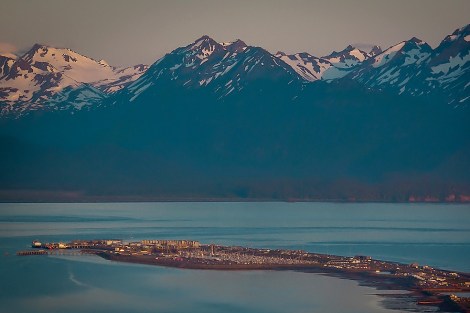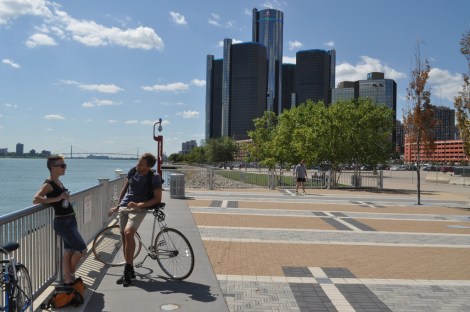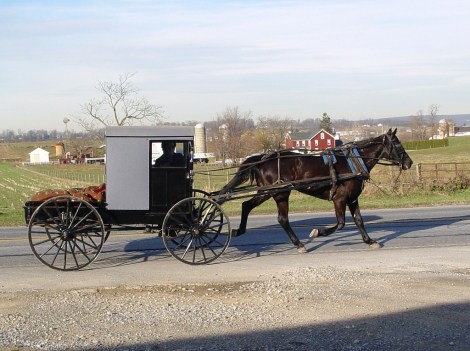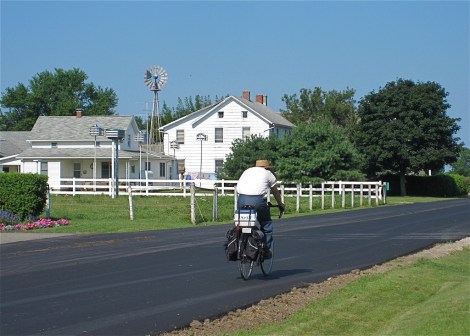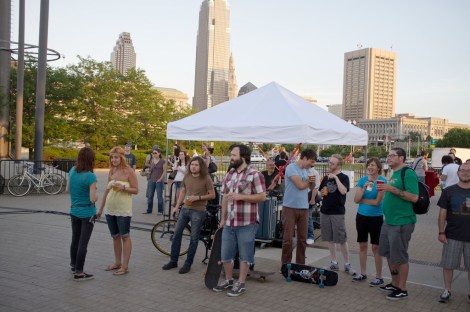Yesterday, we brought you our remarkably unscientific (seriously, it was written by this guy) list of the 10 cities most likely to get hammered by climate change. Today, we thought we’d give you the bright side, such as it is: the 10 towns to which we’ll all be flocking as the rest of the world goes to hell. You’re welcome. (Hey, we don’t call Grist “a beacon in the smog” for nothing.)
Seattle, Wash.
Seattleites are already used to everything being wet all the time, so a little flooding shouldn’t be a big deal — and that’s good, because in addition to the rising seas, climate models call for even more rain in Seattle. Higher tides and a redrawn coastline will require coastal cities to adapt, but unlike a lot of U.S. burgs, Seattle is taking it seriously, developing a comprehensive climate action plan [PDF] and working to bolster food security and general resilience for changing times. Plus, while models foresee flooding, they don’t project the hipster inundation to reach Portlandic levels. And in a worst-case scenario, the Space Needle serves as an escape pod.
Homer, Alaska
Any town named after one of the Simpsons could probably stumble through a climate apocalypse on blind luck alone, but when it comes to climate change, Homer has been preparing like a Flanders. The town of 5,000 developed its first climate action plan [PDF] way back in 2006, and has become a regional leader in renewable energy. It has also drawn the long straw in many climate models, which predict lower levels of sea-level rise and a longer growing season [PDF] for the Kenai Peninsula. Sounds like a great place to grow Tomacco!
Detroit, Mich.
Lets talk straight for a minute. Detroit has been dealt more than its share of shitty hands, but if it can survive The Motor City Madman, Detroit can handle climate change. The Great Lakes may shrink, and Michigan may be drying out, but things could be looking up for Detroit’s urban farmers, and there are a lot of them. Combine that with a push to grow back the city’s trees, and the decay Detroit has faced could turn into a huge opportunity to reinvent itself in this warm, new world. Detroit also has more robocops per capita than any other major American metropolis, which has got to bode well for The Future.
Lancaster, Pa.
You want to talk low-carbon footprint? You wondering who’s ready for a post-fossil-fuel world [PDF]? I’ve got one word for you: Lancaster, Pa., Home of the Amish. The Amish’s small farms provide a model for low-impact agriculture: Livestock feed is grown on site, topsoil is maintained, and crop diversity is encouraged. Dutch Wonderland is also there, and since it’s Dutch and a wonderland, I’m assuming the owners have built plenty of dikes and the place is full of pancakes.
Nappanee, Ind.
You don’t want to live in Nappanee, I don’t want to live in Nappanee, but Nappanee is the home of Gulf Stream Coach, Inc. — not the Gulfstream that makes private jets, the Gulf Stream that makes trailers for FEMA. The company should do a brisk business in warmer times. After Hurricane Katrina leveled New Orleans, FEMA hurriedly bought 145,000 trailers at no bid prices. Sure, they might have had a slight formaldehyde problem, but nothing is perfect. At least FEMA brought them. It was a little different story after Superstorm Sandy laid waste to Long Island.
Cleveland, Ohio
Forbes called Cleveland the most miserable city in America. After all, it’s home to one of America’s most flammable rivers and the Browns. But Cleveland may be better able to weather climate change than any other town. It’s got huge agriculture potential, has just developed a climate action plan, and already has some of the best people in the universe (seriously, visit, it’s amazing) and a library covered in tiny adorable bronze people. Plus, the river water really isn’t all that flammable any more — which is not to say you’d want to drink the stuff.
Leadville, Colo.
If the climate shit impacts even more vigorously with the change fan than we thought, you’re gonna want to be far above the raging seas. But forget the Mile High City. With an elevation of 10,152 feet, Leadville, the highest incorporated city in the U.S., is almost two miles up! And while Denver faces drought, wildfires, sprawl and, most terrifyingly of all, rabbits, Leadville has a pair of lakes, a subarctic climate, and a total land area of only 1.1 square miles. Residents are also apparently already really into biking. We just have to keep sea-level rise to 10,151 feet or less.
Nashville, Tenn.
Nashville should be sitting pretty. It’s a nice, safe, 597 feet above sea level and a few hundred miles from the coast. It’s got plenty of fresh water and a 47 percent tree canopy (above the 40 percent generally considered healthy). Plus, Al Gore lives there, and he must know something. Nashville also has the Grand Ole Opry and if any business is going to thrive in the face of global catastrophe, it’s country music. When a country star’s dog runs away, it’s good for a gold record. How many do you think they’ll sell when that dog bursts into flame? Seriously, Nashville is set.
Burlington, Vt.
Living in Vermont is no picnic. The trees are the wrong color, maple syrup addiction runs rampant, 66 percent of the population is named Daryll, the locals live in constant fear of a Phish reunion, and upon turning 30, Vermonters are forced to leave their loved ones to toil away their few remaining years in the Ben & Jerry’s mines. But Forbes magazine called Vermont the greenest state in the union. Burlington is small and adaptable, the city has a comprehensive climate action plan, and once you get there, there’s plenty to do even if the skiing goes. You’ll just have to live with all the flannel.
San Francisco, Calif.
I know what you’re thinking: Wasn’t San Francisco already destroyed by MegaShark? Well, the city survived — barely — and now boasts a climate action plan [PDF] and a fetish for green tech, and may be one of the most sustainable cities in the world. Yes, it’s on the coast and that means trouble, but San Francsico’s ocean beach master plan [PDF] acknowledges the inevitability of rising seas and includes a managed retreat from the most threatened areas. Besides, we’re pretty sure even the rising Pacific would run out of steam climbing Nob Hill.



